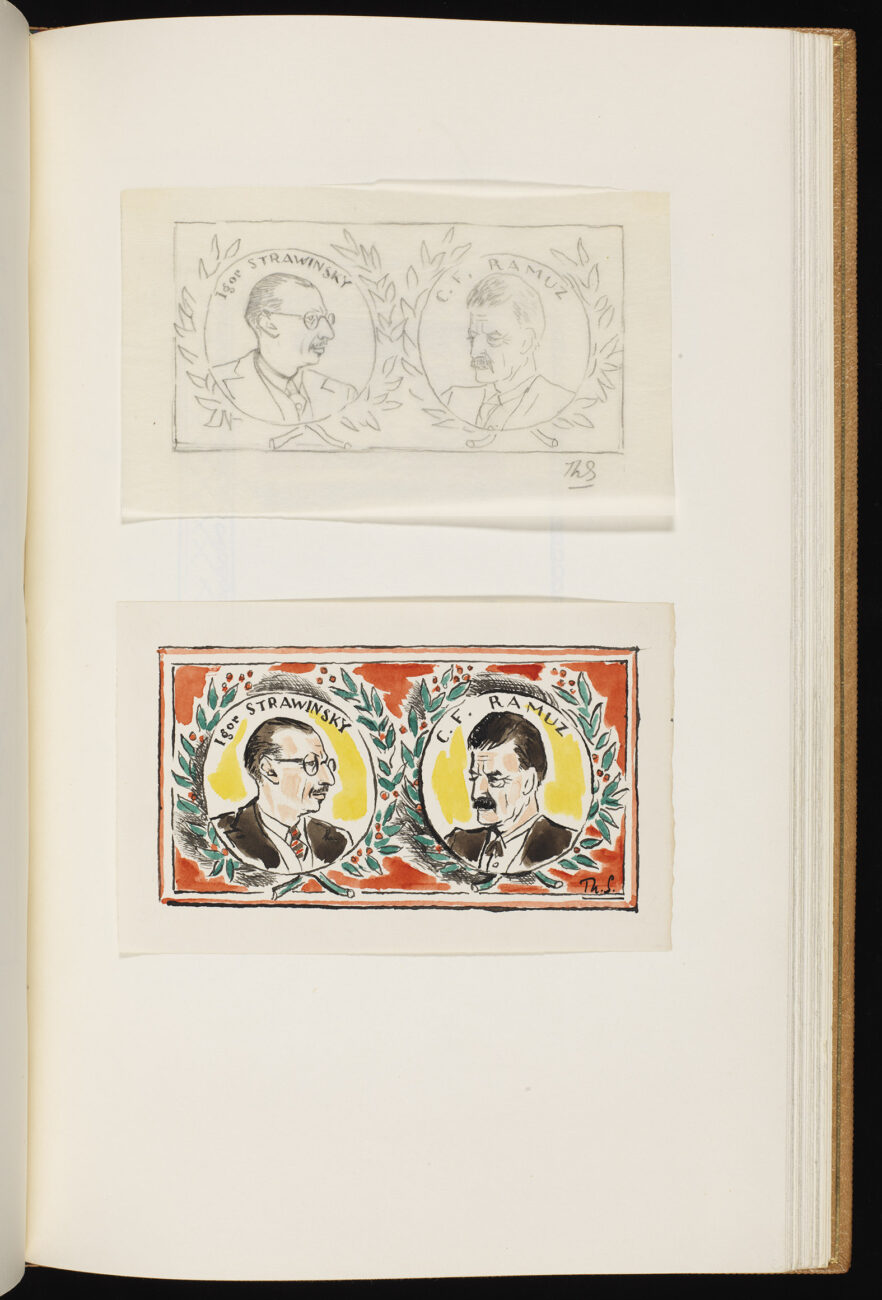Ramuz met the Russian composer Igor Stravinsky, exiled in Switzerland, in 1915, through the conductor Ernest Ansermet. It was a decisive encounter. A privileged relationship was forged between the two artists, who pursed a number of shared projects. Ramuz interpreted the music and wrote the text for Histoire du soldat (The Soldier’s Tale, 1918). This ballet-opera marked a turning point in the writer’s practice, a new phase of bold exploration and stylistic experiment. The collaboration also heightened Ramuz’s international reputation, and even today represents one of his most popular works, regularly performed around the world. In Stravinsky, Ramuz found a peer and a model, as much for his primitivism as for his avant-garde spirit. The Ramuz and Stravinsky families remained close after the composer’s departure, and Ramuz recalls their friendship in his 1929 book Souvenirs sur Igor Strawinsky.
« More simply, what I perceived in you was the appetite and feeling for life, the love for everything that is alive; and that for you everything that is alive was, as if in anticipation, potentially, music.»
Souvenirs sur Igor Strawinsky, 1929
Caption
Théodore Strawinsky (1907-1989)
Double portrait of I. Strawinsky and C.F. Ramuz in the autograph manuscript of “Noces et histoires d’après le texte russe d’Igor Stravinsky” by C. F. Ramuz, 1943
Pencil and watercolor, 15.5 x 10.5 cm
Aut.R-9.3*
© Fondation Martin Bodmer (Cologny)
